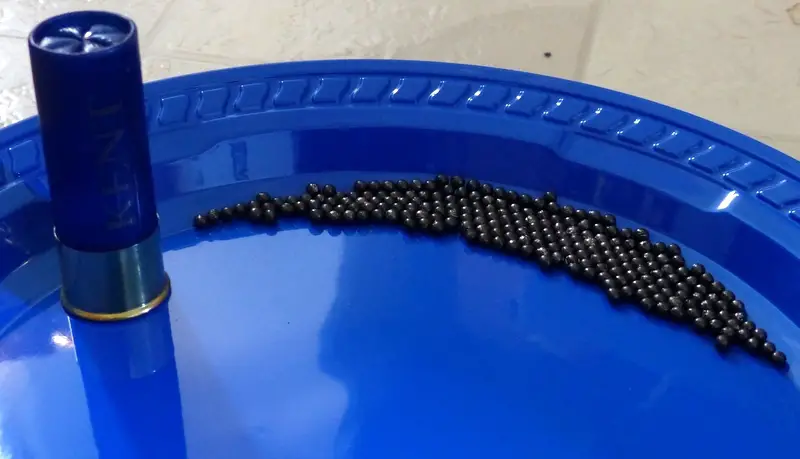More Ducks, Less Ammo

Aside from dove hunting, it is waterfowl hunting that gobbles up the ammunition. The numbers vary a bit from year to year, but Louisiana and Arkansas alone account for over 4.1 million ducks taken every year. Annually, we take over 20,000,000 ducks every year.
Automobiles
and trucks kill about 340 million birds a year, windmills kill some
500,000 birds, so in the grand scheme of things, hunters don't
account for much. Hunters pay for the privilege and eat what they
shoot, something that cars, trucks, and wind turbines are incapable
of. No one wants healthy, vibrant game populations more than hunters: something that can not be said for those who sell wind turbines and motor vehicles.
However, it is estimated that it takes about 6 shells for every duck taken, and 18% hunters report an average 18 percent loss rate to USFWS. The wounding rate on ducks is at least 25 percent —translating to “approximately 3.4 to 3.7 million ducks and geese unrecovered each year in the U.S. and Canada. Numerous studies put averages at 6 shots per dove and about 6 per duck as well.
No type of ammunition makes anyone a better shot and no type of choke tube makes anyone a better shot, either. If your shotgun doesn't shoot where it is pointed, you may be attempting to hunt with only 20% of your potential pattern doing you any good.
Birds that do not drop dead due to insufficient penetration of the pellets or insufficient pattern density to assure 3 – 4 torso hits can be addressed. Anyone who can cut their numbers shotshells used by 50% is going to have less time to grouse about ammunition cost and recoil. I discovered long ago that unfired shotshells don't kick all that much.
It
has been a long time since I was in a blind on the Iroquois river,
duck hunting with my father and grandfather. Those were the blessed
days of lead: 1-1/4 oz. of lead #5 shot. The average duck load of
today positively sucks compared to what I started out using. Steel
truly sucks bigly.
Better shells than steel have long been available, but most have vanished from the market not because of performance, but because of the price of tungsten and not too many folks are willing to pay four dollars a shell.

Energy of a pellet has little to do with lethality. Actually, steel number 2 shot has more energy at 40 yards than lead #5: but the penetration is poor. What you get with steel is pathetically low pellet counts and poor penetration. No one ever hits a duck with a pellet that isn't in the pattern when it leaves the muzzle.
Steel
sucks, clearly, as the 1-1/4 oz. #5 lead load of old had 214 pellets,
but 1-1/4 oz. of steel has only 155. The lead load has 38% more
pellets. Kent Tungsten Matrix loads, the 1-3/8 oz. of #5 TM 2-3/4
inch load, has essentially the same penetration and pellet count as
the classic 1-1/4 oz. #5 lead shotshells. That they work as good or
slightly better than the old lead shells should surprise no one.
The
current Kent Bismuth #4 shell has about 12% better penetration than
steel #2, and the pellet count is around 20% better. It responds to
choke similarly to lead, is easier on barrels and chokes, and is safe
for fixed choke lead-only guns, including fixed full choke barrels. Though dentists prefer you might try to chew on steel, bismuth is a lot safer for protecting your Hollywood smile.
Bismuth isn't as good as buffered lead shotshells, but at roughly two dollars a shell, it is far more palatable for most than the four dollar Tungsten-Matrix loads and they are more than good enough to make most steel loads obsolete. The original bismuth loads had severe fracturing problems, and bismuth is problematic to manufacture in large pellet sizes.
Although the current Kent product has improved the brittleness problem, the largest bismuth shotshells available are #4. It is the top choice for ducks and pheasants, but for geese the pellet diameter is insufficient. To be a viable goose load, we would need at least #1 bismuth and it isn't there yet. For ducks, pheasants, and smaller, though, steel is thankfully obsolete.
Copyright 2017 by Randy Wakeman. All Rights Reserved.












